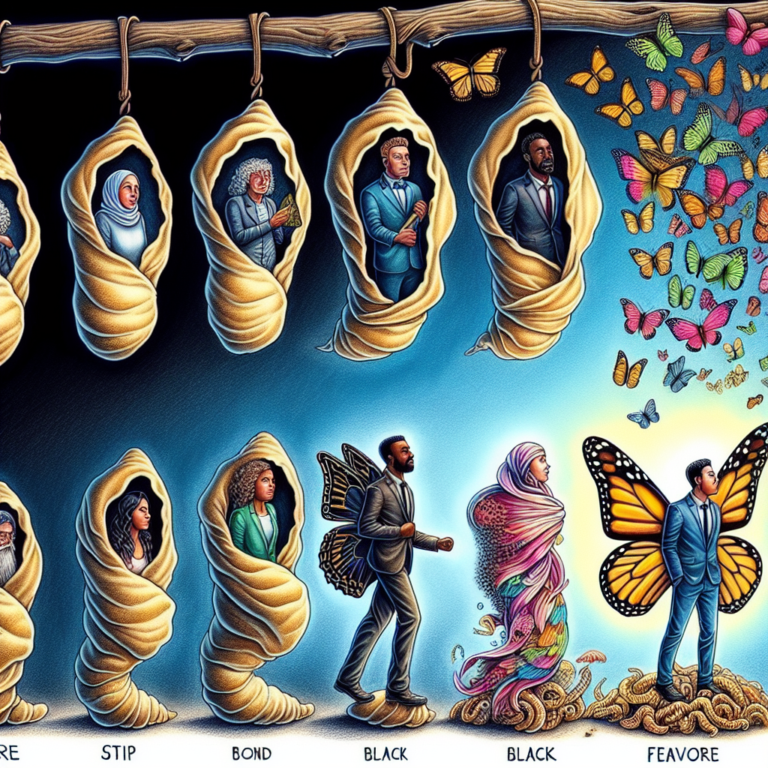What Does “Hope Springs Eternal” Say About Human Optimism?
In the insightful phrase “Hope springs eternal,” we find a profound reflection on the resilience of human optimism. This timeless saying encapsulates the unwavering belief in better days, despite the challenges and uncertainties that life presents. It speaks to our innate ability to harbor hope, to find solace in the possibility of a brighter future, and to continually strive for progress. By delving into the meaning behind this powerful phrase, we can gain a deeper understanding of our own capacity for positivity and resilience in the face of adversity.

Definition of ‘Hope Springs Eternal’
Origin of the phrase
The phrase “Hope Springs Eternal” originated from Alexander Pope’s poem “An Essay on Man” in 1734. Pope used this phrase to express the idea that no matter how dire the circumstances, hope always finds a way to persist and endure.
Meaning of the phrase
The phrase “Hope Springs Eternal” captures the essence of human optimism and the belief that hope has the power to ignite a positive outlook even in the face of challenging situations. It implies that hope is an inherent and everlasting aspect of the human spirit.
Exploring Human Optimism
Definition of optimism
Optimism refers to the tendency to have a hopeful and positive outlook on life. It involves expecting good outcomes, focusing on possibilities, and maintaining a sense of confidence and resilience in the face of adversity.
Why is optimism important?
Optimism plays a crucial role in shaping our mindset and influencing our actions. It helps us approach life with a constructive attitude, enabling us to find solutions, overcome obstacles, and maintain a sense of hope, even in difficult times. Optimism fosters perseverance, motivation, and a belief in the potential for positive change.
Link between hope and optimism
Hope and optimism are closely interlinked, as both involve having a positive expectation for the future. Hope represents the emotional aspect, while optimism reflects a cognitive perspective. Together, they form a powerful combination that fuels our motivation, resilience, and ability to craft a brighter tomorrow.
The Role of Hope in Human Life
Hope as a basic human need
Hope is a fundamental human need, essential for our psychological well-being. It provides us with a sense of purpose, direction, and meaning, enabling us to navigate the challenges and uncertainties of life. Without hope, we may feel lost, stagnant, and devoid of motivation.
Hope as a motivator
Hope serves as a significant motivator, driving us to set goals, take action, and work towards a desired future. It fuels our aspirations, fuels our determination, and instills a belief that our efforts will lead to positive outcomes. Hope keeps us focused, enthusiastic, and committed to personal growth and achievement.
Hope and resilience
Hope and resilience are deeply interconnected, as hope provides the fuel that sustains resilience in the face of adversity. When confronted with setbacks or hardships, hope enables us to bounce back, learn from our experiences, and adapt to new circumstances. It serves as an anchor during turbulent times, reinforcing our ability to endure and thrive.
Analyzing the Phrase ‘Hope Springs Eternal’
Interpreting the phrase
The phrase “Hope Springs Eternal” can be interpreted as a reflection of humanity’s innate capacity for optimism and the unwavering belief in the potential for positive change. It suggests that hope is an eternal force that continually springs forth, even in the most challenging of circumstances.
The eternal nature of hope
Hope, by its very nature, remains eternal. It persists and renews itself, offering us a glimmer of light amidst darkness. Regardless of how bleak a situation may appear, hope continuously emerges, inspiring us to aspire for better outcomes and guiding us towards a more promising future.
The role of hope in overcoming challenges
Hope empowers individuals and communities to overcome obstacles and face adversity with courage and resilience. It provides the psychological strength needed to persevere, adapt, and find creative solutions. In the face of challenges, hope acts as a guiding force that propels us forward, fueling our determination to overcome any obstacles in our path.
The Connection Between Hope and Persistence
The impact of hope on perseverance
Hope plays a crucial role in nurturing perseverance. When we have hope, we are more likely to persist in our efforts, even when faced with difficult circumstances or setbacks. Hope provides us with the belief that our actions can make a difference, increasing our willingness to endure challenges and stay committed to our goals.
Examples of hope-driven persistence
Throughout history, there have been numerous examples of individuals and communities whose achievements were driven by hope. From scientific breakthroughs to societal progress, hope has fueled the persistence needed to overcome obstacles. Inventions, such as the light bulb, the telephone, and the internet, are the products of hope-driven persistence, demonstrating the immense power of hope in driving progress.
The influence of hope on success
Hope plays a critical role in achieving success. The belief in the possibility of a positive outcome serves as a driving force that propels individuals to take risks, persist in the face of failure, and envision a brighter future. Hopeful individuals are more likely to embrace opportunities, seek creative solutions, and maintain a resilient mindset, increasing their chances of achieving their goals.
Hope as a Coping Mechanism
Hope as a way to deal with uncertainty
Hope provides solace and comfort during times of uncertainty and ambiguity. When faced with unknown outcomes, hope allows us to stay resilient, maintain a positive outlook, and cultivate the belief that things will eventually improve. It helps us cope with the fear and anxiety that uncertainty brings, allowing us to navigate unpredictable situations with greater confidence.
How hope affects mental and emotional well-being
Hope has a profound impact on mental and emotional well-being. It acts as a protective factor against stress, anxiety, and depression, offering a sense of optimism, purpose, and stability. Hope cultivates a positive mindset, promotes resilience, and fosters emotional well-being by instilling a belief in the possibility of a better future.
The power of hope in difficult times
During challenging times, hope proves to be a powerful source of strength and motivation. It gives us the courage to face adversity head-on, maintain a sense of perspective, and keep moving forward. With hope, we can find meaning in adversity, draw lessons from our experiences, and ultimately transform difficult situations into catalysts for personal growth.
Hope and Resilience in the Face of Adversity
The influence of hope on resilience
Hope and resilience are deeply intertwined, with hope playing a central role in fostering resilience. When we have hope, we are better equipped to bounce back from setbacks and maintain a positive mindset. Hope provides the motivation and belief that we can overcome adversity, increasing our resilience and capacity to navigate challenging circumstances.
The relationship between hope, optimism, and resilience
Hope, optimism, and resilience form a symbiotic relationship. Optimism fuels our hope, while hope sustains our resilience. Together, they create a powerful synergy that enables individuals to face adversity, recover from setbacks, and adapt to new circumstances with strength and determination.
Case studies of hope in challenging circumstances
Throughout history, there have been inspiring examples of individuals who exhibited hope and resilience in the face of extreme adversity. From Nelson Mandela’s unwavering hope during his imprisonment to Malala Yousafzai’s determination to fight for education rights in the face of Taliban oppression, these individuals serve as beacons of hope, proving that it is indeed possible to triumph over unimaginable challenges.
Hope as a Catalyst for Positive Change
Hope as a driving force
Hope serves as a driving force for positive change. It fuels our desire to create a better world, inspires us to take action, and motivates us to work towards a brighter future. Hope compels individuals and communities to challenge the status quo, envision new possibilities, and actively contribute towards social progress.
The role of hope in social progress
Social progress is often fueled by hope. Throughout history, movements for civil rights, gender equality, and environmental preservation have been driven by individuals and groups who possessed unwavering hope in the face of immense challenges. Hope is the catalyst that enables individuals to challenge oppression, demand justice, and tirelessly advocate for positive societal change.
Inspiration and motivation through hope
Hope has the power to inspire and motivate individuals to achieve remarkable feats. Experiences of hope, whether through personal encounters or stories of others, ignite a spark within us, prompting us to believe that we too can create a positive impact. It is through hope that we find the courage to step outside our comfort zones, pursue our passions, and initiate transformational actions.
The Limits and Dangers of Blind Optimism
Drawbacks of unrealistic optimism
While optimism is generally beneficial, blind or unrealistic optimism can have its drawbacks. Excessive optimism can lead to complacency, as individuals may become less motivated to take necessary precautions or address potential risks. Unrealistic optimism can also blind individuals to the harsh realities of a situation, hindering their ability to make informed decisions.
Balancing optimism with realism
Optimism should be balanced with realism to ensure that our aspirations are grounded in a practical understanding of the world. By acknowledging obstacles and potential setbacks, we can better plan and prepare for challenges while maintaining a hopeful and positive attitude. Balancing optimism with realism enables us to navigate uncertainties with a balanced perspective, adapt to changing circumstances, and make realistic progress towards our goals.
The potential consequences of misguided hope
Misguided hope, when based on unrealistic expectations or false assumptions, can lead to disappointment, disillusionment, and loss of motivation. It is important to base our hope on reasonable expectations, informed by an accurate understanding of the situation. By aligning hope with facts and acknowledging both potential successes and failures, we can maintain a healthy and sustainable outlook that promotes growth and well-being.
The Impact of Dispelling Hope
The effects of losing hope
Losing hope can have a profound impact on individuals and communities. When hope fades, motivation wanes, resilience weakens, and individuals may succumb to despair. Losing hope can lead to decreased productivity, reduced mental and emotional well-being, and a sense of helplessness. It is crucial to nurture and preserve hope to create an environment that fosters growth, well-being, and positive change.
The importance of instilling hope
Instilling hope is vital for the well-being and progress of individuals and society as a whole. Investing in initiatives, such as education, social support systems, and mentorship programs, can play a significant role in fostering hope. By providing individuals with the tools, resources, and support needed to cultivate hope, we can empower them to overcome challenges, pursue their dreams, and contribute positively to their communities.
Replacing despair with hope
Replacing despair with hope requires intentional efforts to inspire and uplift individuals. Acts of kindness, compassionate leadership, and inclusive policies can help create an environment that nurtures hope. By instilling a sense of belief and possibility, we can replace despair with hope and pave the way for a more resilient, optimistic, and hopeful future.
In conclusion, the phrase “Hope Springs Eternal” reflects the profound influence of hope on human optimism. Hope serves as a catalyst for positive change, a coping mechanism in times of uncertainty, and a driving force behind resilience and perseverance. The eternal nature of hope reminds us of its enduring power to inspire, motivate, and guide us towards a brighter future. However, it is essential to balance optimism with realism and ensure that hope remains grounded in a practical understanding of the world. By nurturing hope, we create an environment that fosters growth, well-being, and social progress, replacing despair with optimism and resilience. So, let hope spring eternal in your life, and embrace its transformative potential for a better tomorrow.







